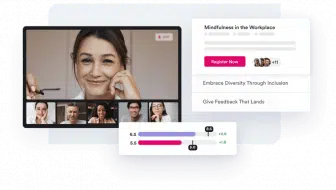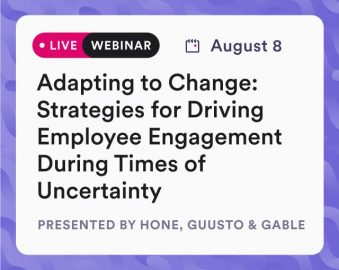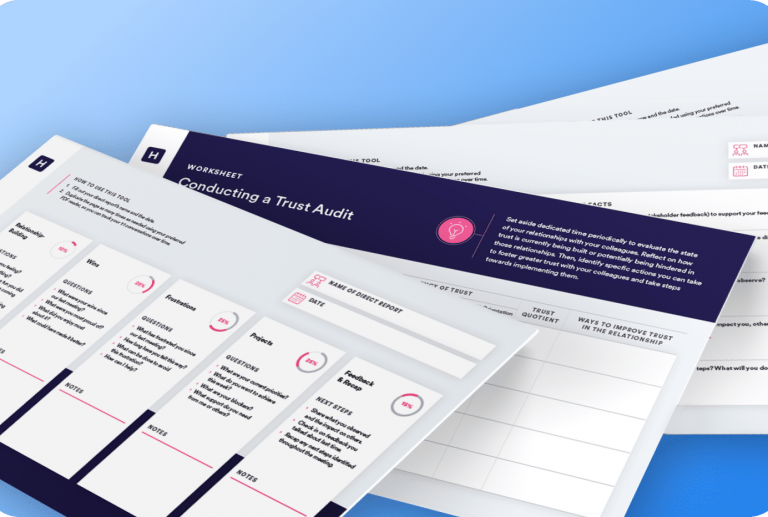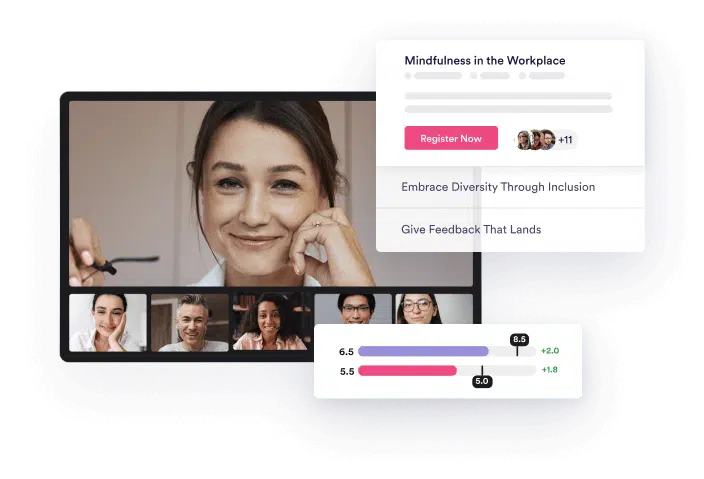What is a Year End Review?
The definition of a year end review refers to an evaluation of an employee’s performance. It occurs once a year. Organizations also refer to this assessment as an annual performance review or end-of-year review.
A year end review is usually a formal conversation about a worker’s achievements and areas for improvement. It is a time for managers to provide constructive feedback about the employee’s performance. Likewise, workers may share details about their experience.
It may also be a meeting to discuss the employee’s goals and opportunities. Finally, a year end review focuses on workers’ professional development.
Year end reviews can help companies evaluate how well employees perform their job duties. They’re also a chance to show employees areas where they can improve to align with companies’ overall mission.
Leaders must acknowledge the critical importance of a performance review and follow-up. A year end review and follow-up is a chance to assess and record development.
What are the 7 Types of Performance Reviews?
- 360-degree – Managers, colleagues, and the individual make an evaluation. This allows for feedback from all directions of the team.
- Traditional performance – A manager conducts an evaluation based on the employee’s work. They supply evidence supporting how well the worker is doing.
- Self-appraisals – Employees review their performance to consider their accomplishments and missteps.
- Employee-initiated – Employees ask their manager for a review to evaluate their performance. This is often to request a promotion or more responsibilities.
- Group performance – Managers review the overall team’s performance. This appraisal may be open for employee feedback to check with their peers. Peer reviews help coworkers see how their peers appreciate them.
- Upward – Staff members provide feedback on how their direct reports or team leads are doing.
- Negotiated – A mediator helps managers and employees discuss work performance.
Why is a Year End Review Important?
Organizations and employees can reap the benefits of performance appraisals. A performance review can lead to a more motivated and dedicated workforce when conducted successfully.
It is an opportunity to build positive manager-employee relationships. In addition, the following are other benefits of conducting an employee appraisal.
Clarifies Expectations
Managers can restate their expectations for workers, such as their daily job responsibilities. This reiteration stresses the importance of what managers need from them.
Makes Time for Conversation
A year end review is scheduled time set aside for performance discussion without distractions. Likewise, it’s a structured time for employees to ask questions and verbalize concerns. In addition, managers can provide coaching and tips during these meetings.
Improves Work Performance
Employees often work harder when their manager recognizes their achievements and shares positive feedback. Additionally, many organizations use year end reviews to determine bonuses. Therefore, they give employees an incentive and reward for their hard work.
Refocuses Work Efforts
Employees can forget how their efforts make a difference. Feedback on completed projects reminds them of why their work matters. Year end reviews also allow managers to echo the company’s vision and goals.
Increases Employee Engagement
Employee involvement in reviews leads to higher engagement and retention. They can see how their performance affects the company overall. Further, employers can show workers they care by providing instructions to help them flourish.
Addresses Areas for Improvement
Managers can spot improvement areas through year-end reviews. The sooner they discover and assist, the less likely the deficiencies will affect the team. This feedback can also stop the problem from becoming irreversible. Therefore, employees can grow to become the best that they can be.
Evaluates & Sets Goals
A year-end evaluation shows how well an employee has reached their goals. Managers can provide feedback and set the objectives for next year. A goal-setting system can ensure continuous improvement and contribution to the organization’s mission.
Helps Determine Training
Organizations can also determine which employees need more training through year end reviews. For example, struggling workers could improve through technical skill courses. Additionally, high performers could benefit from manager training programs.
Strengthens Professional Relationships
Managers can utilize year end reviews to build relationships. Consistent meetings make managers appear more approachable. Annual appraisals can be a meeting to align priorities and brainstorm together.
Creates a Record
Year end reviews are a record of employees’ performance and development. Managers can track their journey and have documentation of their improvement, stagnation, or setbacks. Furthermore, this information helps inform upper management about employees they may not regularly interact with.
Defines Career Growth
Year end reviews help employees’ professional growth. An evaluation can illustrate or be part of a worker’s career trajectory plan. It can be a roadmap if they want to advance to a higher role in the company.
Guides Current Projects
During performance review meetings, employers can check in and review employees’ progress on projects without micromanaging. Likewise, they are a time for workers to ask questions about current projects. Then, managers can provide guidance or direction.
Continuous Performance Management
Conversely, even the most well-intentioned year end reviews can cause a lot of distraction and anxiety. But when there are continuous performance assessments, employees get used to them. In addition, holding frequent reviews allows for open dialogue about expectations and work goals.
Additionally, continuous performance management gives managers more opportunities:
- For coaching and feedback.
- To learn from the past and plan for the future.
- For quicker identification of challenges.
- To create psychological safety.
Weekly reviews allow managers to track employees’ progress on project deadlines and prioritized tasks.
Quarterly reviews can be collaborations for setting better goals through objectives and key results (OKRs). Managers and team members can ensure that their objectives and processes are aligned.
Every six months, the Biannual can formally evaluate staff’s performance.
9 Things to Review in Your Year End Performance Review
Leadership wants to leverage review meetings to provide feedback. These meetings must be strategic rather than informal catch-ups. Here are nine things to cover in year end performance review meetings.
1. Employee’s Accomplishment
Managers can start on a high note by discussing the employee’s accomplishments. One of the many ways employers can show they care about their staff is by crediting their triumphs.
This also gives the individual a chance to expand on their achievement. Thus, the manager can learn more about how the employee was successful. For example, workers may have the best results when working on projects of particular interest.
2. Strengths & Habits
Similarly, managers should acknowledge employees’ strengths. Employee strengths are qualities that add to their performance. They can improve their work or overall impact on company culture. Some common employee strengths include the following:
- Adaptability
- Creativity
- Focus
- Self-starting attitude
- Willingness to learn
Their strengths can also leeway into their work habits. Habits are behaviors that affect their work. For example, some positive work habits include being punctual, being organized, and taking the initiative.
3. Day-to-Day Responsibilities
It is essential to discuss workers’ daily activities, even if they’ve been with the company for years. While experience improves ability, some skills can fall by the wayside. Likewise, time can change how employees should complete their jobs.
For instance, monotony can wear on someone’s efforts. As a result, their drive to do something properly can decrease. Moreover, updated technology can change their job description. Therefore, many people benefit from training programs as refreshers.
4. Performance Measurements
Organizations must set key performance indicators (KPIs) and OKRs that align with their goals. In addition, they must be ambitious and straightforward.
Employees focus on improving the areas where managers rate their performance. For example, if incentives are based on speed, workers’ accuracy may decrease as their timing increases.
5. Areas to Develop & Goal-Setting
The year end review is a platform to clarify areas where the employee can improve. Even the best worker should have development goals.
Additionally, managers and employees can discuss reasons for performance weaknesses. For example, managers may ask, “What barriers exist to completing your goals?
For example, lagging performance could be a lack of clarity or focus or an obstacle. Managers may need to coach employees around hurdles.
6. Company Priorities
Organizations’ objectives change, and a year end review can be the time to update employees. Managers should prepare to communicate change. They may meet employees resistant to transitions, even with minor modifications.
7. Employee’s Goals
In addition to addressing the organization’s objectives, leaders can discuss the employee’s ambitions. Many workers have plans to climb the corporate ladder. Managers can ask questions like:
- Where would you like to head?
- What are you hoping to be able to do more, less, or differently?
Leaders can advise on their next steps, such as training programs to help them strengthen their managing skills. Likewise, employees can learn about the immediate next steps that lead them to their goals.
8. Networking & Mentorships
Similarly, managers can help employees grow by introducing them to the right people. Networking is beneficial for individuals who want to expand their professional contacts.
If a worker expresses an interest in a lateral move, managers may be able to set up mentorships. These connections are great ways for high-potential employees to shift into better-suited positions.
9. Employees’ Concerns
Individuals may want to use year end reviews to discuss human resources-related topics. Like changing company priorities, individuals may have shifted their objectives. A lot can happen in a year, and managers can ask about their team members’ concerns.
Managers must be open to all factors that affect their employees’ performances. For instance, new parents may want to shift to a remote working environment. Or staff members may feel unsafe because of biases in the workplace.
Year End Review Template
Generally, a year end review should cover the topics important to the team and organization. It’s a record of the employee’s performance since their last assessment. Additionally, a review is an opportunity to set goals for the subsequent evaluation.
Here is a template for a year end review:
Introduction
- Briefly introduce the purpose of the year end review.
Achievements
- List the significant achievements of the year, both personal and professional.
- Include specific details such as dates, milestones, and metrics.
Challenges
- Describe the challenges faced during the year, both personal and professional.
- Explain how you overcame them and what you learned from them.
Areas for Improvement
- Identify the areas where you could have performed better.
- List the steps you plan to take to improve in those areas.
Goals
- Set goals for the upcoming year, both personal and professional.
- Ensure the goals are specific, measurable, achievable, relevant, and time-bound.
Gratitude
- Express gratitude for the people, events, and opportunities that made the year memorable and meaningful.
Conclusion
- Sum up the main points of the year-end review.
- Offer a positive outlook for the future.
Feel free to modify this template to fit your needs and preferences. Good luck with your year-end review!








